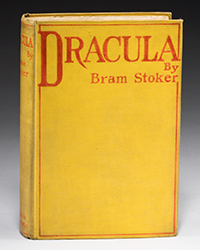Since I've been handling books and old paper for over 40 years without sneezing or blowing my nose a thousand times a day, I wonder why I have become sensitive to dust and other airborne pollutants at this late date? Itchy eyes, swollen irritated sinuses, sneezing, wheezing, the whole nine yards.
When the weather gets very still, or very hot or very muggy, or the piles of books in my house and work space get large and disorderly I find I have wheezing, mucus build up, sinus headaches and breathing in general is difficult.
I thought I had solved the problem back in 2000 when I bought a house with ample storage space and put 90 percent of the books in the storage area and only had a few books in the house at any one time -- the ones that I am cataloging and selling or working on.
But no, the problems persisted and in some stretches got very much worse.
A few years ago when the situation got really out of hand my old friend and former neighbor Charlene, a person who works at one of the local fancy resorts and knows the score on “housekeeping,” volunteered her professional advice.
For some time she had been commenting unfavorably on the cleanliness of my house -- and her conclusion was that I'm sick because my house is dirty, nay filthy and because I don't know how to properly clean it.
At that she came over and demonstrated her technique and I must say after her visit most of my problems disappeared or were diminished.
This is what worked in my environment; maybe it will work for you.
Cleaning Tools
She mocked my tools as hopelessly inadequate, worn out and part of the problem. I was instructed to throw out my old stuff and dispatched to buy two new brooms and a new mop and bucket. In its most simple form, her cleaning mantra is
CLEAN FROM TOP TO BOTTOM AND FROM DRY TO WET.
Dry broom ceiling & walls
Take one of the new brooms and sweep the walls, the sills, the corners, doorjambs, above the pictures, the ceilings, the corners, literally brush the dust off all the surfaces including the screens and space between the screen, sills and glass where dust accumulates.
My God I could not believe how much dust there was. She was right, it was filthy.
Keep this new broom for use just for brushing the walls and ceiling, and things above the floor.
Dry dust with a cloth
After dry brushing the walls and still in the dry mode, dust thoroughly with a dry clean cloth and use a dry stiff small brush for the corners. Take the books, knickknacks, remove all the other objects and dust them. Then wipe down the various shelves and tables, dust the baseboards and molding. Wipe and dust them dry and clean. Dry sweep the floors with the other broom.
Once you've done the entire walls, ceiling, shelves and surfaces take the other new broom and use it on the floors. Sweep the floors completely. Get in there around the power cords, behind the furniture under the sofa and bed and other places where dust accumulates like closets. Get down low in the corners on your hands and knees and sweep it all up.
Keep this broom just for use on the floors, don't use it on the walls.
A new wet mop
Now take your new mop (she made me buy extra mop heads) and wet mop those floors. Be sure to use a cleaning product that does not contain harsh chemicals that might aggravate your sensitivities.
Problem areas around the bed
She pointed out to me that some of the worst dust had accumulated near and over the windows close to my bed and suggested I pay special attention to those places. Instead of sleeping with my head toward the window, she urged me to sleep with my head away from the window. Which I did.
Wash all the bedding and related linen
Now wash everything that can be washed, sheets, towels, tablecloths, mats, curtains, bedspreads -- everything.
We also repeated this same process in the bathroom, which was - as she predicted much dirtier than I had imagined or could see. We washed down the shower walls, the tub sides inside and out, the exterior of the sink and pipes. We took off the shower curtain and washed it in the washing machine and dried it on the line. It came out looking sparkling and brand new.
When we were done we sat down, had a nice stiff drink and relaxed.
It was MAGIC. Within 24 hours almost all of my breathing difficulties had mostly disappeared, and especially wonderful was that I did not wheeze and cough through the night. After only two people working six hours doing real methodical cleaning I felt much much better.
I know, this is simple and obvious, but it took someone else to show me the way.
I promised myself that I would never let the cleaning get that far out of hand again. But I did and this year all the old problems came back with a vengeance, except this time, even with a full on professional cleaning (which made things somewhat better), the sinus inflammation and runny nose never really went away.
Despite visits to the doctor, visit to the allergist, there are many mornings when my nose is as wet as a beagle. Looking for relief I started to investigate dust more closely and find that this is indeed an occupational health hazard for people working around books and there are some that believe it is the culprit not just in breathing problems but also in skin conditions, certain types of cancer, heart attack and depression. Most sources recommend High Efficiency Particulate Arresting (HEPA) Vacuum cleaners and also suggest HEPA face masks. They also make a variety of suggestions for controlling dust mites with special protective covering for mattress and pillows.
In 2004 Hassan Bolourchi, Ph.D, a chemical engineer, wrote in the conclusions to a paper he presented at a meeting on indoor air quality control:
“The dust today is not a problem of appearance, but a problem of health. Dust particulates are one of the most harmful matters that you can inhale.
"In the case of books there are two important points:
"-The surfaces of papers act as a magnet of dust particulates. The three sides of books act as a preserve of dust particulate as long as they are not cleaned.
"-When you open a dusty book, dust particulates deposited on three sides of books are removed and are pushed up with the resulting air current directly into your nose.
"Consideration of these two phenomena makes the case of books important and it is what until now nobody thought about it. This kind of dust transfer to our body is only comparable with the case of active smoking in which somebody blows up harmful matters by himself through respiratory organs into body.”












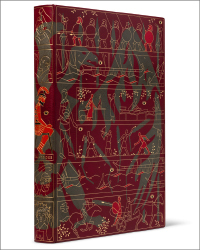



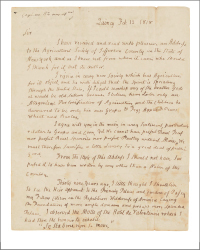

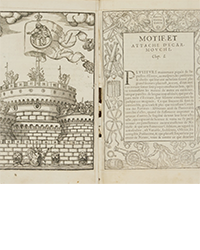
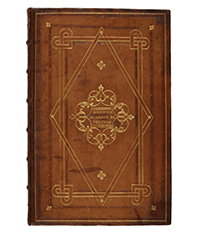
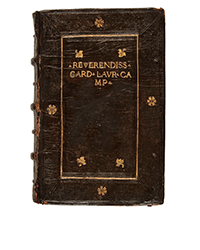
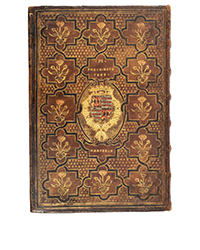

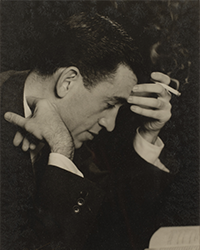
![<b>Sotheby’s, Dec. 16:</b> [Austen, Jane]. A handsome first edition of <i>Sense and Sensibility,</i> the author's first novel. $60,000 to $80,000. <b>Sotheby’s, Dec. 16:</b> [Austen, Jane]. A handsome first edition of <i>Sense and Sensibility,</i> the author's first novel. $60,000 to $80,000.](https://ae-files.s3.amazonaws.com/AdvertisementPhotos/9a74d9ff-42dd-46a1-8bb2-b636c4cec796.png)
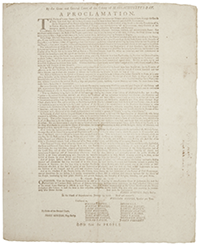

![<b>Heritage, Dec. 15:</b> John Donne. <i>Poems, By J. D. With Elegies on the Author's Death.</i> London: M[iles]. F[lesher]. for John Marriot, 1633. <b>Heritage, Dec. 15:</b> John Donne. <i>Poems, By J. D. With Elegies on the Author's Death.</i> London: M[iles]. F[lesher]. for John Marriot, 1633.](https://ae-files.s3.amazonaws.com/AdvertisementPhotos/8caddaea-4c1f-47a7-9455-62f53af36e3f.jpg)


